With the Spring runoff finally gone, flows on the Taylor River at Wilder have stabilized around 500 CFS with the dam release set at 400 CFS until mid August. This is still about 100 CFS above normal for this time and even though a bit on the high side, the River is on fire with large hatches occurring everyday and dry flies being the fly of choice.
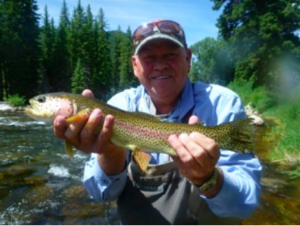 Morning river temperatures are about 49 degrees and as usual the fish can be a bit sluggish in the mornings as they await the big hatches of the afternoon. Try fishing shallow riffles with Green Drake spinners and Para Adams on the surface. Concentrate on these areas with your dries as in the deeper pools fish will be unwilling to rise until about mid day. If you choose to start off with a dry/dropper or nymph rig, one of your droppers should be a Green Drake Nymph and the other a small Caddis pupa or micro Mayfly. Make sure that your presentation is getting down to the fish before changing your rig. Oftentimes a small split shot on a nymph rig can make all the difference in your success.
Morning river temperatures are about 49 degrees and as usual the fish can be a bit sluggish in the mornings as they await the big hatches of the afternoon. Try fishing shallow riffles with Green Drake spinners and Para Adams on the surface. Concentrate on these areas with your dries as in the deeper pools fish will be unwilling to rise until about mid day. If you choose to start off with a dry/dropper or nymph rig, one of your droppers should be a Green Drake Nymph and the other a small Caddis pupa or micro Mayfly. Make sure that your presentation is getting down to the fish before changing your rig. Oftentimes a small split shot on a nymph rig can make all the difference in your success.
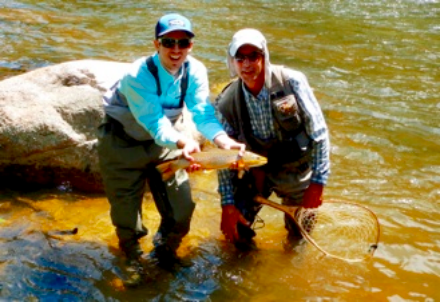 Towards Noon you will start to see a variety of bugs hatching on the water, particularly on cloudy days. These will include several types of Stoneflies, Caddis, Green Drakes, PMD’s and BWO’s. When you see the first insects hatching…get ready! Change up to a long leader(9 plus feet) and 5x tippet, tie on a Green Drake Dry with a smaller Dry such as a #18 Para Adams, #16 PMD, #18 Para Caddis or #20 BWO about 20 inches behind and cast to rising fish. This double dry rig can save time in helping you figure out which fly they want. We have seen the most intense hatches occur during the hardest rainstorms as the rain traps the emerging insects on the surface and the fish literally go crazy eating these helpless bugs.
Towards Noon you will start to see a variety of bugs hatching on the water, particularly on cloudy days. These will include several types of Stoneflies, Caddis, Green Drakes, PMD’s and BWO’s. When you see the first insects hatching…get ready! Change up to a long leader(9 plus feet) and 5x tippet, tie on a Green Drake Dry with a smaller Dry such as a #18 Para Adams, #16 PMD, #18 Para Caddis or #20 BWO about 20 inches behind and cast to rising fish. This double dry rig can save time in helping you figure out which fly they want. We have seen the most intense hatches occur during the hardest rainstorms as the rain traps the emerging insects on the surface and the fish literally go crazy eating these helpless bugs.
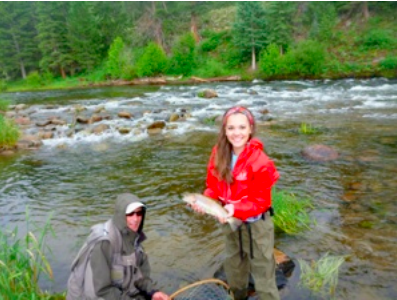 On Saturday at 1 pm, the rain was pounding on the river and I witnessed one of the most intense rises I have ever seen. For about 20 minutes, it seemed as if every fish in the river was crashing the surface eating Drakes, PMD’s and BWO’s. These intense feeding periods are often short lived, so assuming that there is no lightning, it is worth standing out in the rain to experience one of these incredible moments in fly fishing. These are times when the big fish come to the surface so try to target a larger fish with your dry. Many times what happens is that the small fish beat the bigger fish to your fly. To avoid this, watch carefully and look for a big fish to target.
On Saturday at 1 pm, the rain was pounding on the river and I witnessed one of the most intense rises I have ever seen. For about 20 minutes, it seemed as if every fish in the river was crashing the surface eating Drakes, PMD’s and BWO’s. These intense feeding periods are often short lived, so assuming that there is no lightning, it is worth standing out in the rain to experience one of these incredible moments in fly fishing. These are times when the big fish come to the surface so try to target a larger fish with your dry. Many times what happens is that the small fish beat the bigger fish to your fly. To avoid this, watch carefully and look for a big fish to target.
 We have had success with a variety of Green Drake and PMD patterns during the hatch. If you are sure that you are getting a good drift and the fish aren’t eating your fly, try different patterns until you find something that they like. Make sure that the fish you see is actually eating on the surface and not below. If you see heads popping up, it’ a good sign that a dry will work. If all you see is the fishes backs, there is a likelihood that they are eating emergers just under the surface and a floating nymph or emerger pattern will be your best bet. These fish can be finicky during the hatch. If you are not having luck with a dead drift, try skating your fly and bouncing it along the surface. Often times this will trigger a strike that a dead drift won’t.
We have had success with a variety of Green Drake and PMD patterns during the hatch. If you are sure that you are getting a good drift and the fish aren’t eating your fly, try different patterns until you find something that they like. Make sure that the fish you see is actually eating on the surface and not below. If you see heads popping up, it’ a good sign that a dry will work. If all you see is the fishes backs, there is a likelihood that they are eating emergers just under the surface and a floating nymph or emerger pattern will be your best bet. These fish can be finicky during the hatch. If you are not having luck with a dead drift, try skating your fly and bouncing it along the surface. Often times this will trigger a strike that a dead drift won’t.
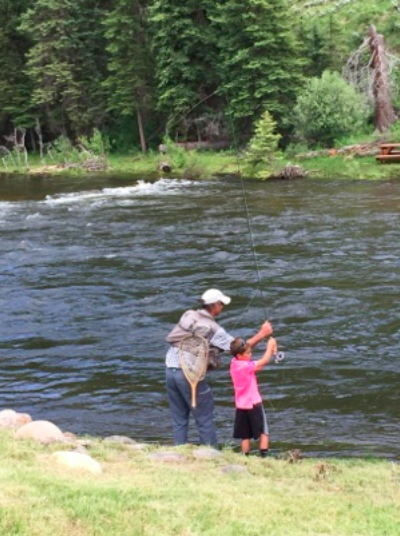 We are currently experiencing the best dry fly fishing of the year on the Taylor. The fish are eating like crazy and it is a perfect time to be on the river. Last week with a crew from Tennessee we caught the same 22 inch Rainbow on 2 different days on a dry, a sure sign that the fish are looking up and willing to eat.
We are currently experiencing the best dry fly fishing of the year on the Taylor. The fish are eating like crazy and it is a perfect time to be on the river. Last week with a crew from Tennessee we caught the same 22 inch Rainbow on 2 different days on a dry, a sure sign that the fish are looking up and willing to eat.
Peak activity is from around 11 a.m. until 3:30 p.m. This is when you want to be on the water. It seems that between 4 and 7 p.m., the fishing slows quite a bit until the evening Caddis rise begins around 7-8 pm. We generally do better during this Caddis hatch by skating rather than dead drifting our Caddis patterns. Cast across and slightly down, hold your rod way up and try to tease your fly along the surface. Be careful with your hook set when skating with a tight line as it is easy to over set and break off the fish.
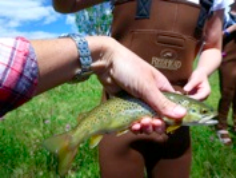 I would like to caution everyone to be watchful of the sky and at the first sign of lightening or nearing storm cell, please reel up and get off of the water. Oftentimes these storms will be violent and fast moving but also short lived. Waiting until they pass is the right call no matter how many fish are rising. Remember that no trout is worth the risk of waving a 9 foot graphite fly rod around in a lightning storm.
I would like to caution everyone to be watchful of the sky and at the first sign of lightening or nearing storm cell, please reel up and get off of the water. Oftentimes these storms will be violent and fast moving but also short lived. Waiting until they pass is the right call no matter how many fish are rising. Remember that no trout is worth the risk of waving a 9 foot graphite fly rod around in a lightning storm.
I look for flows to hold in the low 500 range through mid August and fishing to continue to be excellent on top. The Green Drakes will pass soon but smaller dries will continue to bring up fish for the rest of the season.
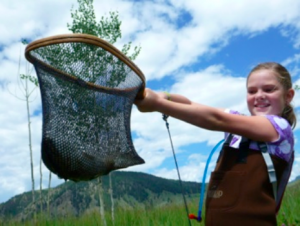 Rarick Creek has been providing explosive surface action with Hopper and Damsel patterns. As the hay meadow is cut, Grasshoppers flock to the stream banks and particularly on windy afternoons, the fish are just laying in wait for one to hit the water. They are liking a #8 Parachute Hopper pattern presented very lightly on the water. Look for foam lines and deep edges along the banks to present your fly. Last week we had a guest land a heavy 25 inch Rainbow that absolutely annihilated a Hopper pattern the instant it hit the water. If your Hopper pattern goes untouched, try a #16 Pheasant Tail dropper about 18 inches below your dry and see what happens.
Rarick Creek has been providing explosive surface action with Hopper and Damsel patterns. As the hay meadow is cut, Grasshoppers flock to the stream banks and particularly on windy afternoons, the fish are just laying in wait for one to hit the water. They are liking a #8 Parachute Hopper pattern presented very lightly on the water. Look for foam lines and deep edges along the banks to present your fly. Last week we had a guest land a heavy 25 inch Rainbow that absolutely annihilated a Hopper pattern the instant it hit the water. If your Hopper pattern goes untouched, try a #16 Pheasant Tail dropper about 18 inches below your dry and see what happens. 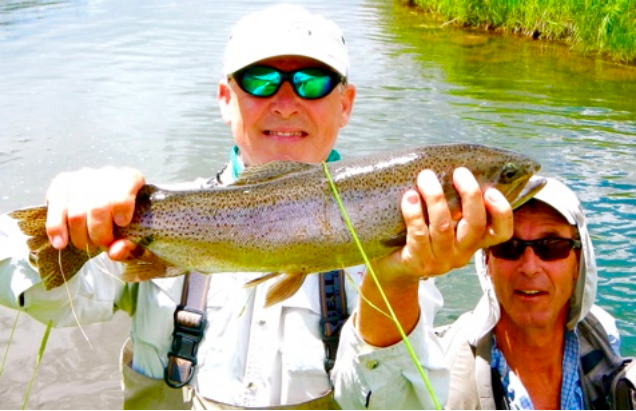 As you walk the Creek, fish the shallow riffles as well as the deep holes as you may find some large fish hiding in shallow
As you walk the Creek, fish the shallow riffles as well as the deep holes as you may find some large fish hiding in shallow
water.
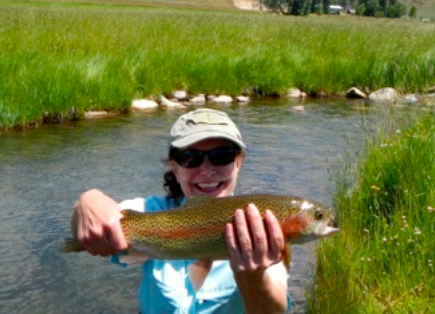 If you catch a fish in the Creek, please take the time to revive it well before releasing him. If the fish is not looking good, quickly take it to a riffle and hold the fish pointing into the fast current until he swims away. Then watch him as he swims off to make sure he is ok. Sometimes the fish will appear ok, but then a couple of minutes later will turn belly up. If this is the case, re-net the fish and revive him some more. Please do not hold the fish out of the water for any longer than necessary to take a quick photo.
If you catch a fish in the Creek, please take the time to revive it well before releasing him. If the fish is not looking good, quickly take it to a riffle and hold the fish pointing into the fast current until he swims away. Then watch him as he swims off to make sure he is ok. Sometimes the fish will appear ok, but then a couple of minutes later will turn belly up. If this is the case, re-net the fish and revive him some more. Please do not hold the fish out of the water for any longer than necessary to take a quick photo.
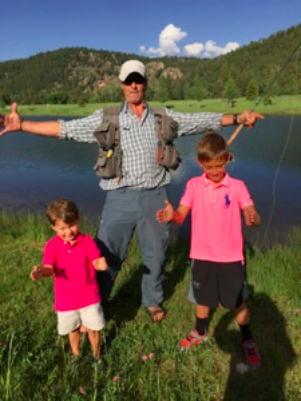 Other successful patterns have been a #16 Para Adams, Green Drake and Damselfly dries.
Other successful patterns have been a #16 Para Adams, Green Drake and Damselfly dries.
After releasing a fish, run your fingers along your tippet to check for abrasions. These big fish like to rub your line against the rocks and will do a good job of weakening it. If you feel any roughness, cut off the tippet and replace before casting again.
The Ponds have been kicking out some big Rainbows on Hopper and Damselfly patterns. Walk the edges and try to sight a big fish, then throw your fly about 10 feet in front of it, give it a twitch or two and see how he reacts. Try this on a few fish before changing your fly or adding a dropper. These are big, powerful fish so when you hook one make sure to let it run when it wants to to avoid breaking off what could be a trophy Rainbow. If the larger patterns are not working, scale down and try a smaller dry. I try not to use any tippet lighter than 4x here as 5x will lead to many broken off fish.
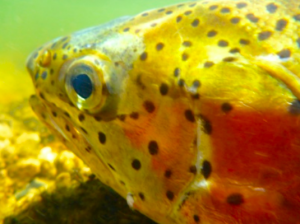 It is common that after hooking a few fish, the rest will spook and stop eating. If you find yourself in this situation, walk away, try another Pond and return an hour or two later to try again.
It is common that after hooking a few fish, the rest will spook and stop eating. If you find yourself in this situation, walk away, try another Pond and return an hour or two later to try again.
All in all the fishing at Wilder has been off the charts for the past week. If you want to experience world class dry fly fishing, schedule a trip with us soon and enjoy our amazing fisheries.
Please feel free to contact me directly for an up to the minute fly fishing report or any question that you may have. I can be reached at 970-946-4370
Tight lines,
Lu
Wilder on the Taylor River offers a unique opportunity to own private fly-fishing property along with a beautiful riverfront home. Click the links to learn more.








